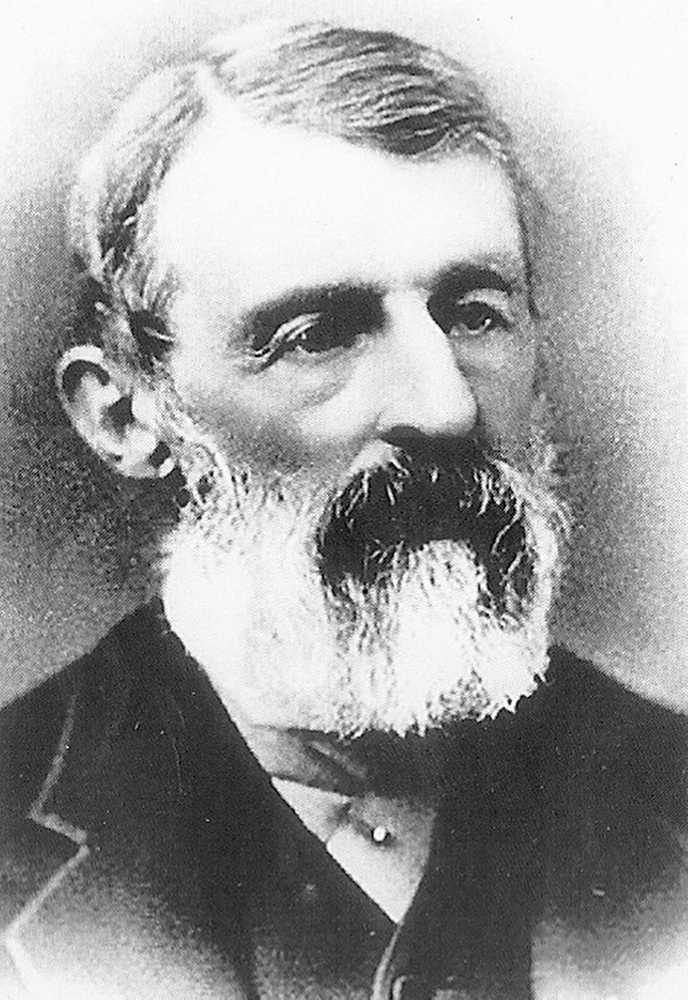LOS ANGELES — Daniel Lucius “Doc” Adams may never be a household name like baseball’s imagined inventor Abner Doubleday or basketball’s actual inventor James Naismith. But a newly verified set of documents, titled “Laws of Base Ball,” being sold at an auction that ended Saturday, go a long way toward lifting him to legendary status.
They lend him credit for the distance of the base paths at 90 feet, the length of the game at nine innings and the size of a team at nine players, all in 1857, three years earlier than previously thought. Here’s a closer look at baseball’s new-old daddy.
The facts of his life
“Doc” was not just a colorful nickname. He was an actual physician, whose father was also a doctor. He was born in 1814 in Mont Vernon, New Hampshire, and went to Amherst College and Yale University as an undergraduate before moving on to Harvard Medical School. He first went into practice with his father in his hometown before setting out on his own in Boston, then New York. He practiced medicine and played baseball simultaneously into the 1860s, when he married, had five children and served as a Connecticut state legislator.
Doc Adams and baseball
As a member of the New York Knickerbockers Base Ball Club, he was as close as one could come in the mid-19th century to being a big leaguer. He began playing a primitive version of baseball in the 1830s. He was the game’s first shortstop, because he invented the position, which at the time served primarily as a relay thrower from outfielders because the balls didn’t fly far. He played every other position on the field except pitcher at various times, too, batted left-handed, and made the balls the club used. It’s difficult to know who baseball’s best players were at the time, but his prominence and longevity suggest he was one of them. Adams served several stints as president of the Knickerbockers, which in 1857 hosted a convention of 14 New York-area clubs to codify the rules of the game. It’s the decisions of that convention that led to the recently verified documents, and to the game we now recognize as baseball.
The uncle of baseball
Adams’ central role has gone largely unacknowledged, but he was far from a new name for early-baseball historians. He might have been called an “uncle” of baseball. His importance has been increasingly championed since 1980, including by John Thorn, the official historian of Major League Baseball. Thorn said newspaper accounts from the time and other historical evidence have suggested Adams’ importance, but his central role remained somewhat speculative until now.
Baseball’s displaced father
Alexander Joy Cartwright, Jr., a contemporary of Adams who had also served as president of the Knickerbockers, has been credited with the 90-foot base paths, nine inning games, and nine players on a side, including on his 1938 plaque at the Hall of Fame. A 1953 declaration of Congress made similar statements. However, he was not in New York and was not involved in the 1857 meeting that established the rules. Hall of Fame spokesman Brad Horn said there are no plans to change or remove Cartwright’s plaque, and that a sign at the Hall lets visitors know that plaques represent the best information available at the time of induction.
What about Abner Doubleday?
Generations of children wrongly learned that Doubleday, a prominent Civil War general, invented baseball. In the early 20th century he was given official credit for coming up with the first schemes for playing baseball in 1839 in a cow pasture in Cooperstown, New York, which would lead to the Hall of Fame’s establishment there. But Doubleday made no claim to inventing baseball, and left no documents on the game demonstrating his contributions, though his name will likely forever be attached to it.
Why are these documents surfacing now?
The owner paid a healthy $12,000 for them in 1999 knowing they were old sporting documents, but their central significance to baseball didn’t become clear until he took them last year to SCP auctions, which thoroughly analyzed and verified them.
Will the Hall of Fame acknowledge Adams’ role?
Adams was on the Hall of Fame ballot for 2016, but baseball’s Pre-Integration Era Committee only gave him 10 of 16 votes and he needed 12. The new documents and the attention they are receiving may prove to be what he needs for induction and acknowledgment.

